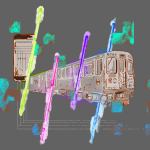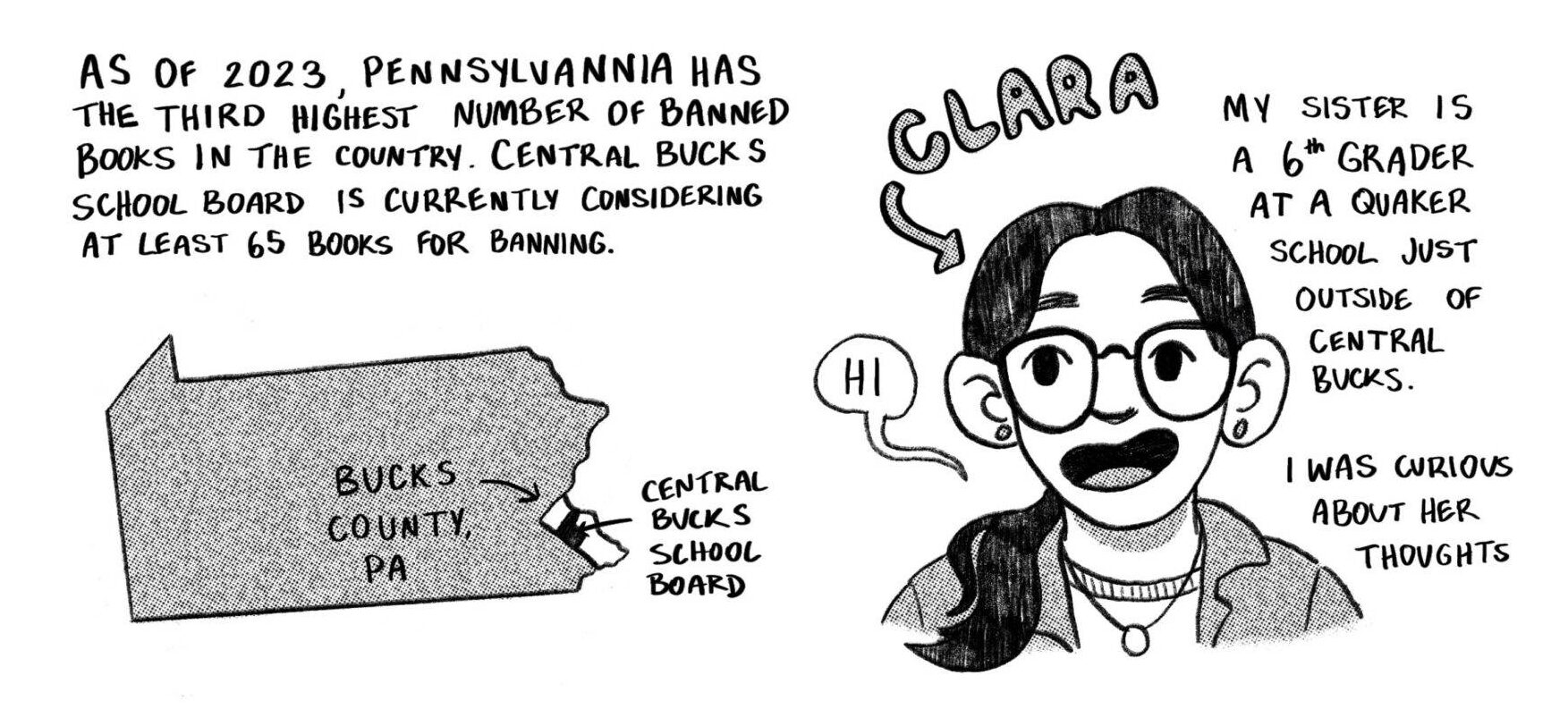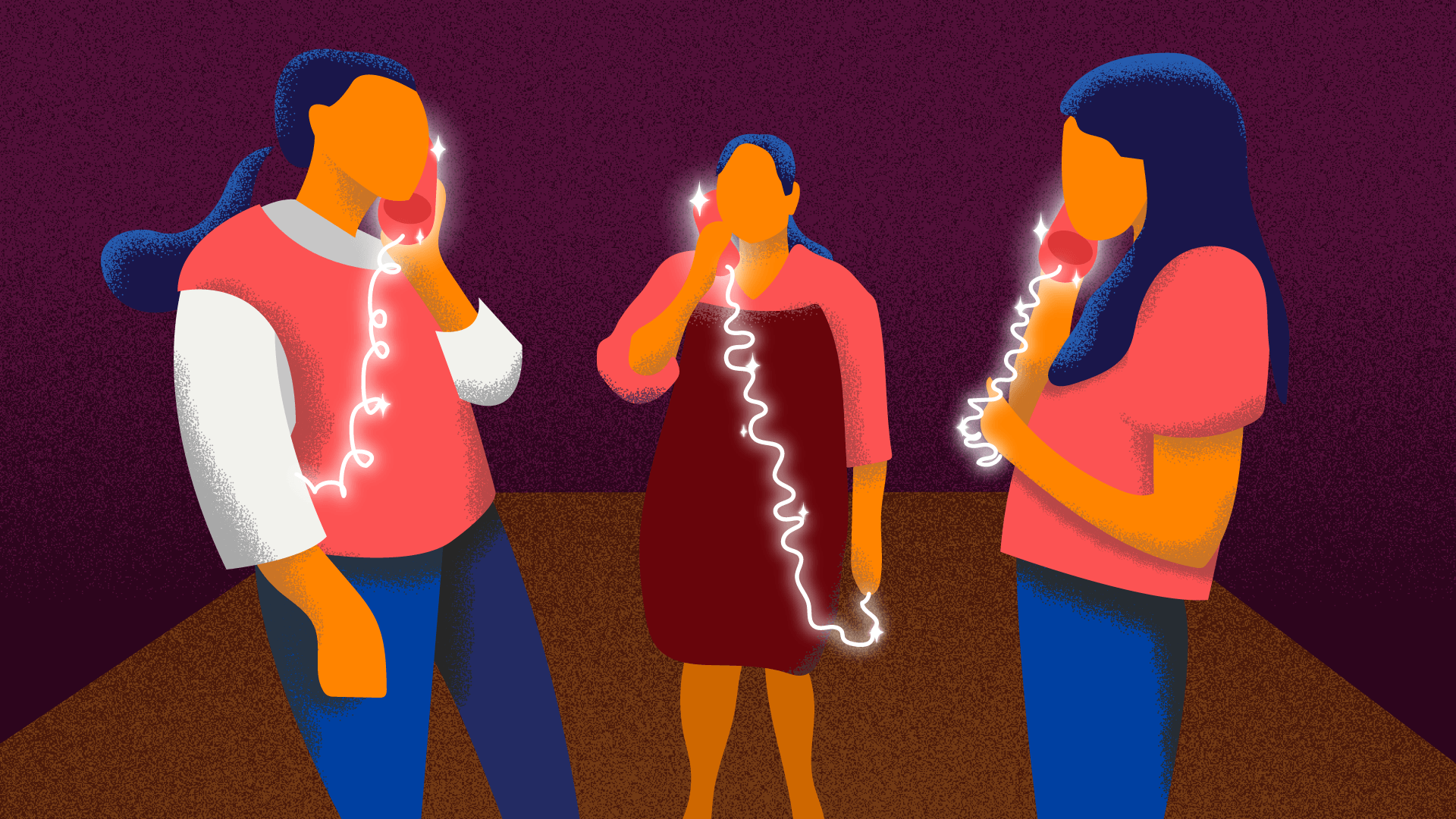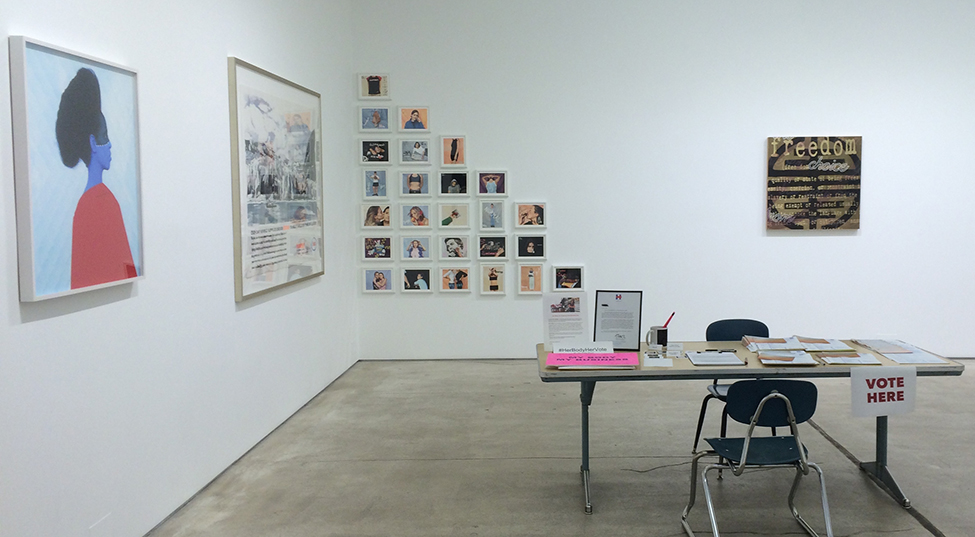
The interior of the West 24th Street Gallery presents a voter registration table along with the hanging pieces, reinforcing the confluence of art and politics in the exhibition. Photograph by Sandra Giselle Lopez.
With the 2016 presidential elections just a few months away, artists in New York City have taken art and politics to a new level by establishing the first artist-run Super Pac at the Jack Shainman Gallery in New York City.
Eric Gottesman and Hank Willis, two artists with a shared belief in political action, created the exhibition “For Freedoms” using both the Shainman Galleries on West 20th and West 24th Streets. In the initial exhibition, one gallery posed as a unique hybrid between traditional gallery space and Super Pac headquarters.
A Super Pac is an independent Political Action Committee (PAC) that raises unlimited contributions from members whose donations can be used to advocate for or against political candidates.
Operating under this capitalistic apparatus, “For Freedoms” allocates funds to transform exhibited work into advertisements to be shown nationwide on billboards and on other print and digital platforms.
Though the two galleries functioned as a cohesive exhibition, the spaces differed greatly. Resembling a political headquarters, the 24th Street gallery space was bustling with energy and information. Flyers with the “For Freedoms” logo covered a supporting pillar in the gallery, which also featured a heavily-tacked bulletin board of exhibition propaganda.
Tables with informational packets, pins, and brochures were peppered throughout the gallery space. Super Pac staff members were seated and ready to answer questions.
Slightly overwhelmed by the amount of information, I asked the staff about the effectiveness and function of a gallery/political headquarters hybrid.
“We have been surprisingly busy,” said one smiling staff member. “Visitors are interested in knowing what ‘For Freedoms’ is all about. It’s pretty unheard of, but many are happy to support a unique and empowering initiative.”
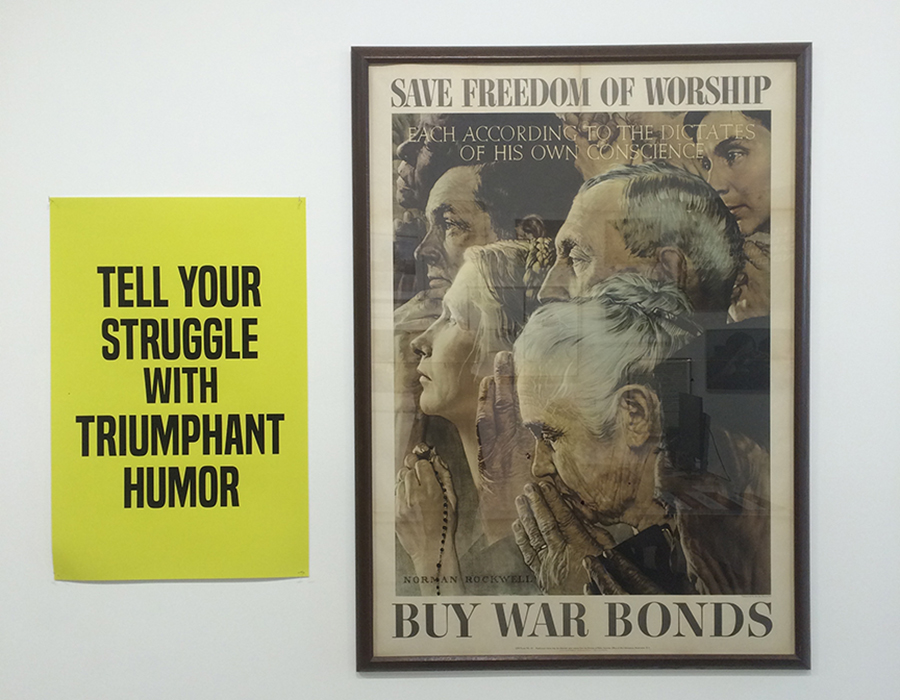
A poster from Kamelah Janaan Rasheed’s series “How to Suffer Politely (and other Etiquette)” influences the meaning of Norman Rockwell’s iconic “For Freedoms.” Photograph by Sandra Giselle Lopez.
The show’s exhibited works varied in time period, style, and content, and ranged across social issues, from sexual and reproductive health to gentrification and environmental policy.
Spread along the right hand side of the wall at the 24th Street gallery were Norman Rockwell’s iconic posters “Four Freedoms” which inspired the title of the show. The four illustrated posters refer to four American freedoms established by President Roosevelt in a 1941 address: freedom of speech, freedom of religion, freedom from want, and freedom from fear.
According to the “For Freedoms” website, the Super Pac “aims to subvert a Rockwellian nostalgia for a ‘simpler’ America while co-opting a visual language accessible to a wide audience.”
Each Rockwell poster (originally paintings done by Rockwell in 1943 and published in the Saturday Evening Post that year) found contemporary counterparts in Kameelah Janaan Rasheed’s bold, typographic posters titled “How to Suffer Politely (and other Etiquette).”
The placement of these two seemingly disparate works offered an example of the striking relationship between the sentimental notion of freedom versus our more cynical contemporary understanding of it. Rockwell’s freedom is idealistic and accessible, whereas Rasheed’s freedom is conditional.
The 20th Street gallery offered a more isolated viewing experience. There were no informational booklets, flyers, or tables staffed by personnel eager to inform. It was within this exhibition space that the curatorial design of the exhibition stood out.
Toward the back of the gallery, Christian Serrano’s portrait of Donald Trump was placed directly across from Hank Willis Thomas’ circular sculpture featuring the logo for the Black Panthers.
Thinking back to the Republican nominee’s hollow slogan, “Make America Great Again,” the visual tension created by the two pieces further underscore history’s place in the current political climate — a reminder that racial inequality, violence, and police brutality remain a pressing issue.

The placement of the pieces in the West 20th street gallery make evident the recurring struggle of civil rights in today’s fraught political climate. Photograph by Sandra Giselle Lopez.
Also displayed was a piece by Dread Scott: a replica of the 1963 flag originally displayed by the NAACP. It read, “A Black Man was Lynched By Police Yesterday.” Unfortunately, the flag was only displayed for a short time outside the building before being taken down at the request of the gallery’s property manager. The flag was then displayed inside, facing a window for visitors and passers-by to catch a glimpse.
Though the exhibition closed August 5, its reach continues to expand beyond gallery walls. People continue to donate to the “For Freedoms Super Pac” online and one can also view the advertisement-art in print and through digital media.

